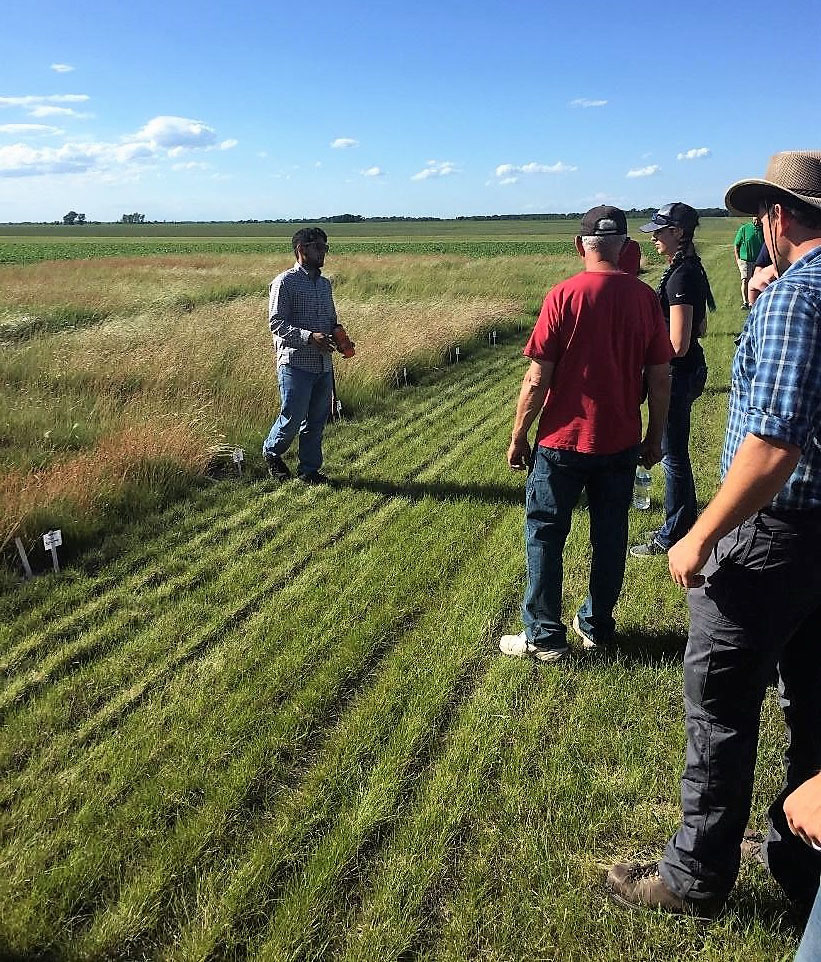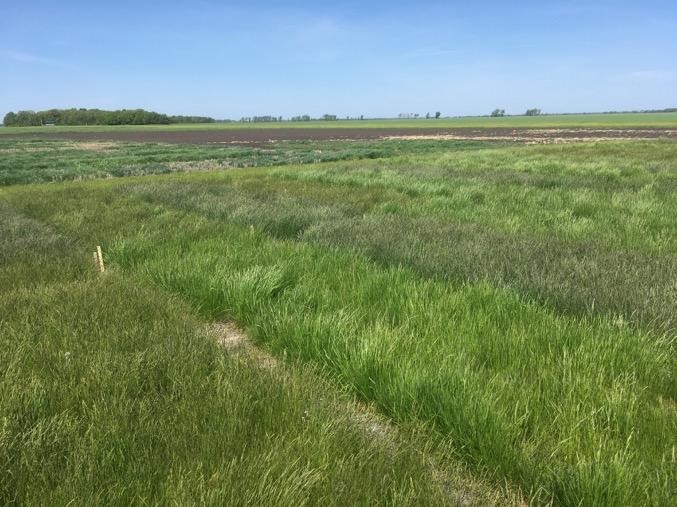Growers are primarily producing perennial ryegrass seed, a turfgrass species that lacks some of the advantages that fine fescue possess, in the northern parts of Roseau and Lake of the Woods counties. These turfgrass species have been profitable for growers in the last two decades as the varieties came from previous UMN research. Through our fine fescue seed production management research, we hope to determine if fine fescue seed production is a viable option for these producers.
In 2015, a fine fescue management and fertility experiment was established at three locations across Minnesota: Roseau, Becker, and St. Paul (Figure 2). To understand how growers could start producing quality seed, these experimental seed production plots mimic current practices in terms of seeding rates and residue management. Five fine fescue species were used in this seed production experiment under different nitrogen requirements (Tables 1 and 2).
| Species | Common Name | Cultivars |
| Festuca trachyphylla | Hard fescue | 'MNHD' |
| Festuca ovina | Sheep fescue | ‘Quatro’ |
| Festuca rubra ssp. commutata | Chewings fescue | ‘Windward’ |
| Festuca rubra ssp. litoralis | Slender creeping red fescue | ‘Shoreline’ |
| Festuca rubra ssp. rubra | Strong creeping red fescue | ‘Cindy Lou’ |
| Treatment | Fall Application | Spring Application | Total Nitrogen |
| 1 | 0 | 0 | 0 |
| 2 | 20 | 20 | 40 |
| 3 | 0 | 40 | 40 |
| 4 | 40 | 40 | 80 |
| 5 | 0 | 80 | 80 |
After two growing seasons of this fine fescue experiment, data has revealed that there are variable yields in fine fescue turfgrass species across the five species used. A subset of our data in Figure 3 shows hard fescue ‘MNHD’ yields for 2017 and 2018 growing seasons in Roseau. For all of the fine fescue species examined, two growing seasons of yield data so far show that fine fescue yields might be high enough to be profitable in one year but not another year. 2017 yield results are promising with 1200-1800 lbs/acre seed yield range, which is slightly less than perennial ryegrass. When considering that fine fescue seed is more valuable per pound than perennial ryegrass, the higher value of fine fescue seed might attract growers. 2018 seed yields were substantially lower. Inconsistent yields between years has been seen before in previous attempts to produce fine fescue seed and is one reason this research is important. Variable rainfall, soil fertility, temperature, and fine fescue plant physiology are all reasons that might explain why yields were lower in the 2018 growing season. Further investigation is needed.
This important research provides promise to grass seed growers looking to produce this valuable and more sustainable turfgrass seed. Based on our results, we believe northern Minnesota has potential to become a hub for high quality fine fescue seed production. For more information on fine fescue seed production, please feel free to contact David R. Herrera at [email protected].


